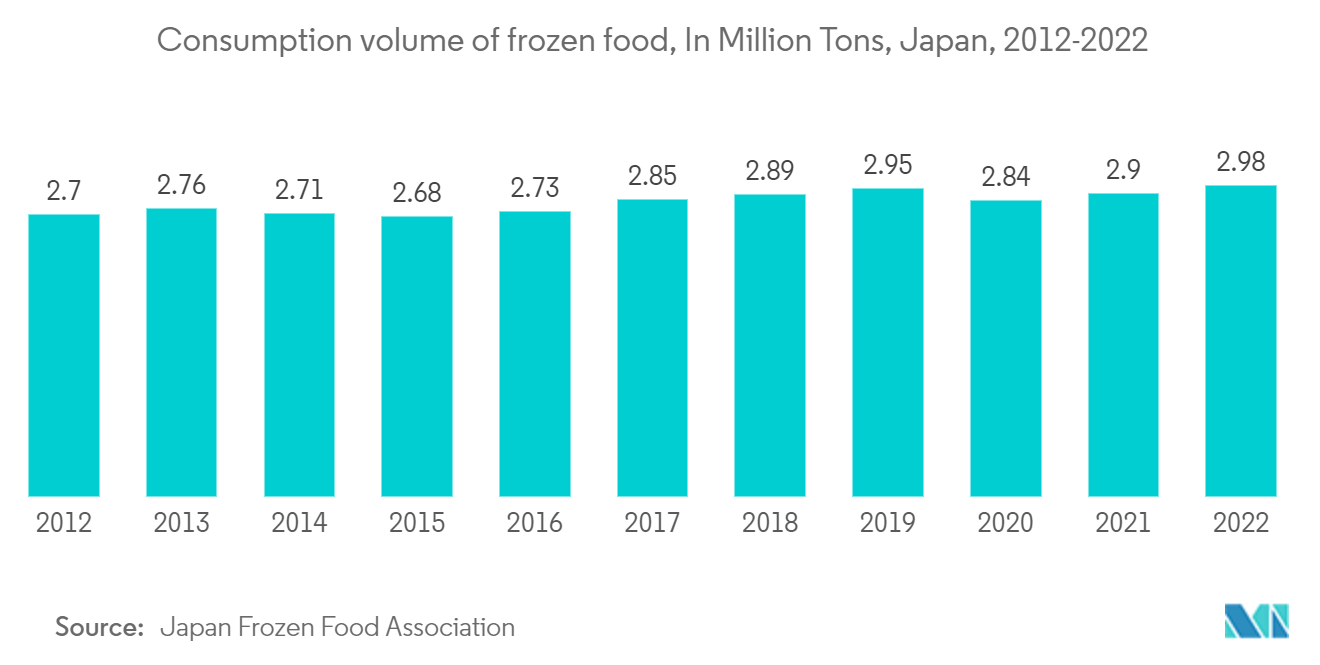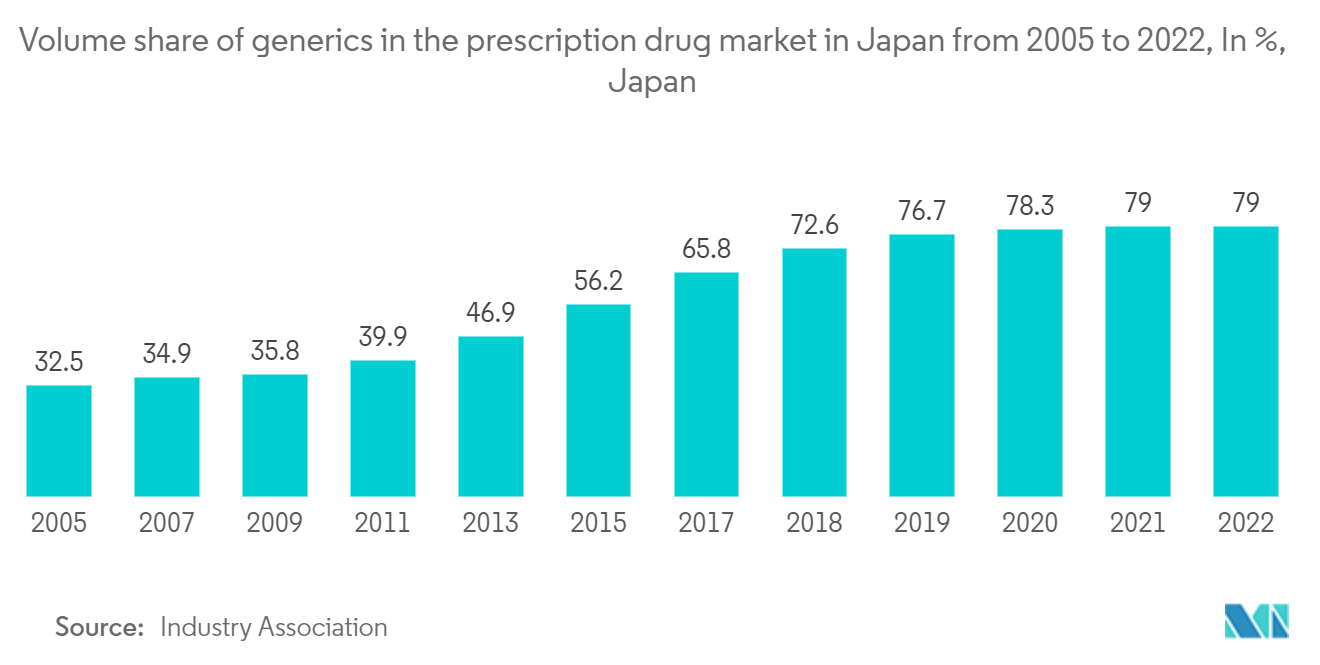Market Trends of Japan Cold Chain Logistics Industry
Modern Households Leading to Demand for Frozen Foods
The demand for chilled/frozen foods is increasing as a solution for modern-age families, such as independent elderly citizens, increase in dual-income households and single people, along with the danger of food loss and increasing overall labor shortages in the food and beverage industry.
In 2021, the consumption volume of frozen food in Japan amounted to about 2.9 million tons (USD 0.020 million tons). Popular frozen food products manufactured in Japan include dumplings (gyoza), croquettes, and wheat-flour noodles (udon). In recent years, Japanese food also exploded worldwide, especially agricultural products.
As the Japanese population ages, the shift to healthy life expectancy is a common desire of the people aiding the sale of frozen products. It also significantly increased in supermarkets, hypermarkets, and drugstores. Frozen food items in Japan became more diverse due to advances in refrigeration technology and growing demand for eat-at-home products amid the COVID-19 pandemic.
High-priced delicacies from well-known restaurants and authentic reproductions of food from abroad grew across the market, prompting department stores and supermarkets to speed up efforts to expand sales spaces.

Growth of Pharmaceutical Sector in Japan
Japan is one of the largest pharmaceutical markets in the world, primarily due to its aging population. It is also among the major producers and importers of advanced medical facilities backed by active government initiatives to promote generic drugs.
The country's native biologics sector is second after the USA. Coupled with the government's focus on supporting lower-cost copycat products, this entails a massive opportunity for bio-similars. While innovative drugmakers long benefited from generous exclusivity periods in Japan, the country is catching up with other mature markets regarding generics penetration.
The confidence in the system is reflected by the fact that domestic drugmakers are increasingly going global with their products. With the share of top Japanese companies' overseas sales rising steadily, the demand for cold chain storage and transportation facilities is also increasing. Another critical factor for increased interest in Japan's pharmaceuticals sector is the need to enhance Japan's drug discovery ecosystem.
The increased COVID-19 infection cases in the country increased the demand for prescription drugs and vaccines. It impacted the pharmaceutical product demand. The increasing import of COVID-19 vaccines increased the pharmaceutical product demand. For instance, in May 2021, the Japanese government signed a contract with Pfizer-BioNTech to import 194 million (USD 1.33 million)vaccine doses by the end of 2021. In 2021, the Japanese prescription drug market was valued at approximately JPY 10.6 trillion (USD 0.080 Trillion), up from about JPY 10.4 trillion (USD 0.079 Trillion) in 2020, according to IQVIA.

